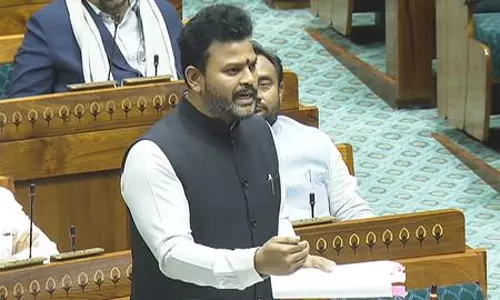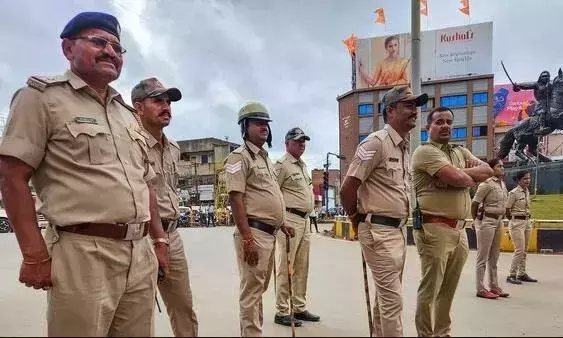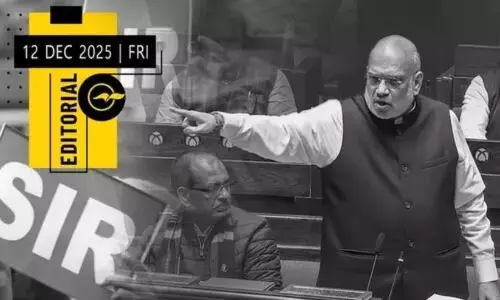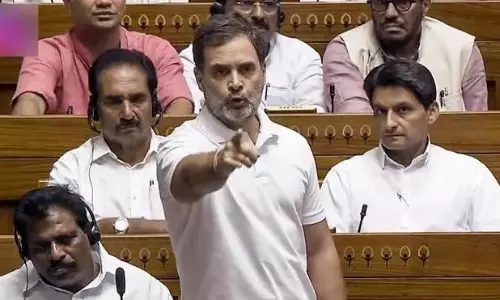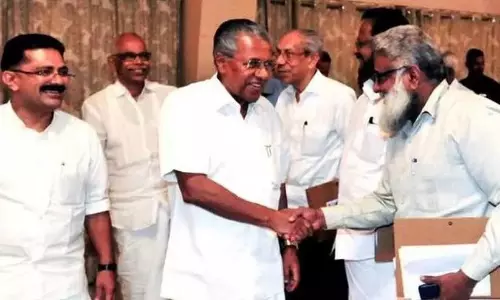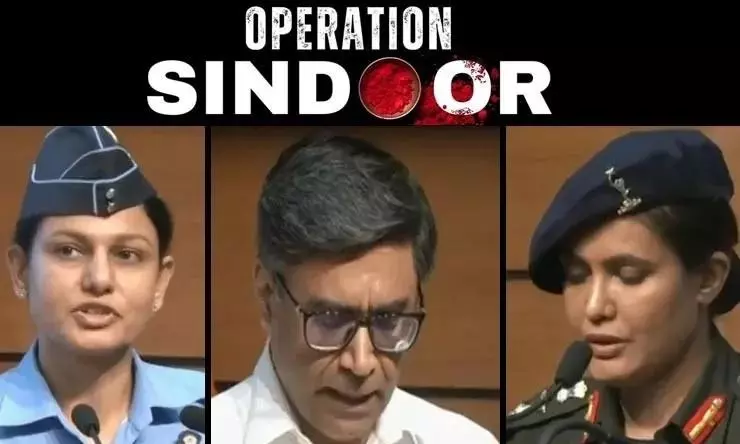
Forces explain rationale, targets behind ‘Operation Sindoor’, not aimed at escalation
text_fieldsIndia’s military strike on what it described as terrorist infrastructure in Pakistan and Pakistan-occupied Kashmir (PoK) was not an act of escalation but a measured counter-terror operation, the Indian armed forces and the Ministry of External Affairs clarified on Wednesday.
In a high-level press briefing in New Delhi on Wednesday, Indian military and diplomatic officials provided a detailed account of the objectives and rationale behind ‘Operation Sindoor’, the precision military operation targeting nine terrorist facilities across Pakistan and Pakistan-occupied Jammu and Kashmir (PoJK). The operation followed a brutal terror attack in Pahalgam, Jammu and Kashmir, which Indian authorities described as one of the most horrific since the 26/11 Mumbai attacks.
The media briefing was led by Foreign Secretary Vikram Misri, flanked by Colonel Sofiya Qureshi and Wing Commander Vyomika Singh, who collectively explained that the operation was carried out in a measured, proportionate, and non-escalatory manner. According to them, the strikes were designed specifically to dismantle terrorist infrastructure and disable operatives linked to recent and planned cross-border terror incidents.
Indian officials clarified that Operation Sindoor was based on actionable intelligence indicating imminent threats from terror groups operating across the Line of Control. Emphasising restraint, Colonel Qureshi explained that civilian areas were deliberately avoided and no Pakistani military installations were targeted. The objective, they said, was narrowly focused: neutralising terror launchpads and disrupting the network that facilitates cross-border attacks.
According to information released during and after the briefing, nine terror facilities were targeted. The attacks were carried out following what the armed forces described as credible evidence linking these locations to groups such as Lashkar-e-Taiba (LeT), Jaish-e-Mohammad (JeM), and Hizbul Mujahideen. These groups were allegedly responsible for recruiting, training, and launching terrorists into Indian territory.
Indian defence officials had initially issued only a broad statement citing nine locations "from where terrorist attacks against India have been planned and directed." Independent details started surfacing later through video footage from Pakistani territory, especially Bahawalpur, and a statement from Pakistan’s military spokesperson, who acknowledged six targets across Punjab province and PoK, citing 24 “impacts”.
Subsequently, Indian sources shared a detailed list of the nine selected targets with the media. Bahawalpur, long considered the headquarters of JeM, and Muridke, formerly home to LeT's leadership, were among the most prominent. While Indian intelligence claims significant militant activity continues in these locations, it is widely acknowledged that groups like LeT had likely relocated many of their operatives in anticipation of a strike.
In Shakargarh’s Sarjal area, a camp linked to JeM was struck, situated just 8 km from the international border. Another training facility associated with Hizbul Mujahideen was hit in Mehmoona, in Sialkot district. Both were described as key hubs for jungle and weapons training.
In PoK, three Lashkar-linked camps were reportedly neutralised: Gulpur, believed to be linked to past attacks in Poonch and Rajouri; Kotli, allegedly used to train suicide bombers; and Sawai, identified as the base where the Pahalgam attackers were trained. The Sawai camp, near Tangdhar, was also said to have connections with earlier incidents in Sonmarg and Gulmarg.
Additional strikes targeted the Bilal camp, described as a JeM launchpad, and the Barnala camp in PoK. While details on Bilal’s location remain unclear, Pakistani sources claimed a mosque in Muzaffarabad was hit, which may be the same site.
Colonel Qureshi explained that over the past three decades, Pakistan had developed an elaborate web of indoctrination, recruitment, and training centres for terrorism. The military, she said, had targeted only those facilities with direct operational relevance to cross-border attacks.
Foreign Secretary Misri further contextualised the strikes by referencing Pakistan’s long-standing record of supporting terrorism, including providing safe havens to internationally proscribed individuals and groups. Wing Commander Vyomika Singh underscored that India’s intention was not escalation but prevention, specifically, to pre-empt further attacks by disabling core terror infrastructure.
Officials declined to take questions, citing the evolving nature of the situation. However, they reiterated that the Indian armed forces remain fully prepared to respond if the situation escalates, while maintaining a firm but responsible stance against cross-border terrorism.





